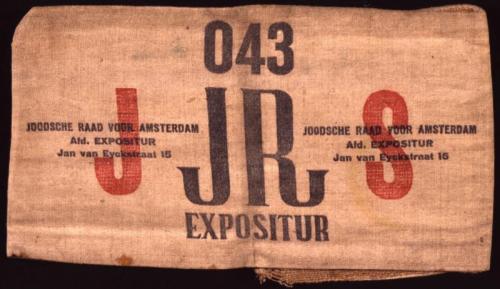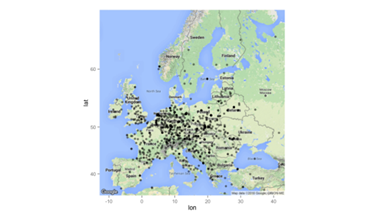Digital Historiography of the Holocaust

Holocaust Research Using Digital Tools
Much of the primary source material on which Holocaust research is based can be found in archives. EHRI not only provides online access to many such archives through its Online Portal, but it also creates (digital) tools and methods that enable researchers and archivists to collaboratively work with these sources. One task of EHRI is to develop services for conducting digital research with archival sources that addresses major challenges faced by Holocaust historians: the amount of potentially relevant source material to be considered; the semantically complex, 'messy' and dispersed nature of such sources; and challenges arising from collaborative approaches to Holocaust research. The convergence of these challenges brings to the fore a set of technical, methodological and epistemological questions.
A special EHRI work package has been set up to investigate these challenges. Its objectives are:
- Develop open digital methods for Holocaust research using EHRI sources.
- Develop a platform that uses advanced computational techniques such as text and relationship mining and visualisation to deal with very large quantities of archival material.
- Deliver an online space where users can freely access and download tools and workflows for analysing archival documentation and present their own.
Research use cases
A first step is the selection of research use cases that have been defined based on the current state of the Holocaust historiography and Holocaust-related digital sources available through EHRI. Besides historical research these research use cases also include the other two disciplines in EHRI: archival science and digital humanities. These cases will inform the method and tool development work undertaken later on in the work package. The research use cases aim to facilitate the co-investigation and co-development of digital methods and tools between Holocaust and digital researchers. To begin with the Work Package has experimented with open digital methods in three areas:
- Networks and names to extract names and their relationships with organisations and locations from document collections relevant to Holocaust research.
- Topic and language shifts try to map how topics and understandings of the Holocaust have shifted.
- Investigations on geographies that map the places and spaces of the Holocaust.
Results
At the EHRI General Partner Meeting in June 2016, initial results on geographies and topics in the testimonials at the United States Holocaust Memorial Museum were presented:

Figure 1: Testimony locations within Europe
In a recent work package meeting, two use cases were chosen to explore further:
- Names and Networks. Chances of Survival during the Holocaust
- Machine learning
The latter use case has a more technical approach whereby with the use of digital tools (meta)data in the portal can be searched for dates, events or names (Named Entity Recognition, NER). It will investigate how digital methods could be used to support archivists in building interoperable and consistent descriptions of sources. The objective of this use case is to deliver a tool providing means to perform recognition, extraction and normalisation of events.
Names and Networks
The first case, Names and Networks, will primarily use the digitized source of the Jewish Council in the Netherlands, which NIOD keeps. During the Second World War, the Jewish Council of Amsterdam was the representative body of the Dutch Jewish Community and cooperated with the Nazi authorities. The archive is commonly used for historical research, but no one has used it for digital research yet. A prerequisite of using digital tools is that the documents are machine-readable. With the aid of digital tools, the Jewish Council archive will be scanned for persons to find out whether certain networks can be discovered.
Two groups of people were chosen:
- Secretaries who worked for the Jewish Council. The work package team will select a number of secretaries and visualise and analyse their social network and the way they functioned as informational nodal points. Who were in contact with the secretaries? What does it mean to be connected (family connections, living in the similar location)? What information passed secretaries on to their family, friends, and acquaintances?
- "Random' survivors". A list of twenty people who were not deported will be composed, and the work package will analyse where their names appear in the Jewish Council archive.
Results of this digital research use case and others of this work package will be published online as well as through advanced journal publications.
Image: Armband of the "Joodsche Raad voor Amsterdam" (Jewish Council of Amsterdam) - BeeldbankWo2/NIOD